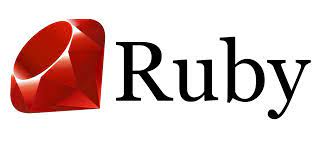Girilen iki sayının toplamıyla ilgili arama hacimleri, genellikle programlama diline göre değişebilir. Örneğin, Google arama motoru üzerinden yapılan bir aramada “girilen iki sayının toplamı C#” şeklinde bir sorgu girdiğinizde, C# dilinde girilen iki sayının toplamını hesaplamak için kullanılabilecek örnek kodların ve öğreticilerin listesi görüntülenir. Benzer şekilde, “girilen iki sayının toplamı Python” gibi bir sorgu girdiğinizde, Python dilinde girilen iki sayının toplamını hesaplamak için kullanılabilecek örnek kodlar ve öğreticiler görüntülenir.
Bu tür arama sorguları genellikle programlama öğrenen veya bir yazılım projesi gerçekleştiren kişiler tarafından yapılır. Bu kişiler, girilen iki sayının toplamını hesaplamak için kullanabilecekleri kod örneklerine ve öğreticilere ulaşmak amacıyla bu tür arama sorgularını yaparlar. Bu nedenle, girilen iki sayının toplamıyla ilgili arama hacimleri genellikle yüksektir.
PHP

PHP’de, iki sayının toplamını hesaplamak için aşağıdaki kodu kullanabilirsiniz:
$number1 = 10; $number2 = 20; $sum = $number1 + $number2; echo "Sayıların toplamı: $sum";
Bu kod, $number1 ve $number2 adlı iki tamsayı değişkenini tanımlar ve $sum adlı bir değişkene bu iki sayının toplamını atar. Daha sonra, echo komutunu kullanarak ekrana “Sayıların toplamı: 30” şeklinde bir çıktı gösterir.
Python

number1 = 10
number2 = 20
sum = number1 + number2
print("Sayıların toplamı:", sum)Bu kod, number1 ve number2 adlı iki tamsayı değişkenini tanımlar ve sum adlı bir değişkene bu iki sayının toplamını atar. Daha sonra, print() fonksiyonunu kullanarak ekrana “Sayıların toplamı: 30” şeklinde bir çıktı gösterir.
Not: Python dilinde, değişkenleri tanımlamak için türlerine göre bir belirteç (örneğin int veya float) kullanmanıza gerek yoktur. Değişkenlerin türü, atadığınız değere göre otomatik olarak belirlenir.
React

React, JavaScript dilinde çalışan bir kullanıcı arayüzü (UI) kütüphanesidir. Bu nedenle, React içinde bir sayıların toplamını hesaplamak için JavaScript kodunu kullanabilirsiniz. Örneğin, aşağıdaki örnekte gösterildiği gibi bir sayıların toplamını bir React componenti içinde hesaplatabilirsiniz:
import React from 'react';
function SumCalculator() {
const number1 = 10;
const number2 = 20;
const sum = number1 + number2;
return <div>Sayıların toplamı: {sum}</div>;
}
export default SumCalculator;Bu örnekte, SumCalculator adlı bir React componenti oluşturulur. Bu component, number1 ve number2 adlı iki tamsayı değişkenini tanımlar ve sum adlı bir değişkene bu iki sayının toplamını atar. Daha sonra, return ifadesi ile bir div elementi döndürür ve bu element içine “Sayıların toplamı: 30” şeklinde bir çıktı gösterir.
Java

public class Main {
public static void main(String[] args) {
int number1 = 10;
int number2 = 20;
int sum = number1 + number2;
System.out.println("Sayıların toplamı: " + sum);
}
}Bu kod, Main adlı bir sınıf tanımlar ve bu sınıfın içinde main() adlı bir yöntem tanımlar. Bu yöntem içinde, number1 ve number2 adlı iki tamsayı değişkenini tanımlar ve sum adlı bir değişkene bu iki sayının toplamını atar. Daha sonra, System.out.println() metodunu kullanarak ekrana “Sayıların toplamı: 30” şeklinde bir çıktı gösterir.
Not: Java dilinde, değişkenlerin türlerini belirtmek zorundasınız (örneğin int veya double). Değişkenlerin türlerine göre bir belirteç kullanmanız gerekir.
VİSUAL BASİC

Evet, Visual Basic dilinde iki sayının toplamını hesaplamak için aşağıdaki kodu kullanabilirsiniz:
Public Class Form1
Private Sub Button1_Click(sender As Object, e As EventArgs) Handles Button1.Click
Dim number1 As Integer = 10
Dim number2 As Integer = 20
Dim sum As Integer = number1 + number2
MessageBox.Show("Sayıların toplamı: " & sum)
End Sub
End ClassBu kod, Form1 adlı bir sınıf tanımlar ve bu sınıf içinde Button1_Click() adlı bir olay işleyicisini tanımlar. Bu olay işleyicisi, number1 ve number2 adlı iki tamsayı değişkenini tanımlar ve sum adlı bir değişkene bu iki sayının toplamını atar. Daha sonra, MessageBox.Show() metodunu kullanarak ekrana “Sayıların toplamı: 30” şeklinde bir çıktı gösterir.
Not: Visual Basic dilinde, değişkenlerin türlerini belirtmek zorundasınız (örneğin Integer veya Double). Değişkenlerin türlerine göre bir belirteç kullanmanız gerekir.
GO

Go dilinde iki sayının toplamını hesaplamak için aşağıdaki kodu kullanabilirsiniz:
package main
import "fmt"
func main() {
number1 := 10
number2 := 20
sum := number1 + number2
fmt.Println("Sayıların toplamı:", sum)
}Bu kod, main paketini tanımlar ve main() adlı bir fonksiyon tanımlar. Bu fonksiyon içinde, number1 ve number2 adlı iki tamsayı değişkenini tanımlar ve sum adlı bir değişkene bu iki sayının toplamını atar. Daha sonra, fmt.Println() fonksiyonunu kullanarak ekrana “Sayıların toplamı: 30” şeklinde bir çıktı gösterir.
Not: Go dilinde, değişkenlerin türlerini belirtmek zorunda değilsiniz. Değişkenlerin türleri, atadığınız değere göre otomatik olarak belirlenir. Değişkenleri tanımlamak için := operatörünü kullanabilirsiniz.
RUBY

Ruby dilinde iki sayının toplamını hesaplamak için aşağıdaki kodu kullanabilirsiniz:
number1 = 10
number2 = 20
sum = number1 + number2
puts "Sayıların toplamı: #{sum}"Bu kod, number1 ve number2 adlı iki tamsayı değişkenini tanımlar ve sum adlı bir değişkene bu iki sayının toplamını atar. Daha sonra, puts yöntemini kullanarak ekrana “Sayıların toplamı: 30” şeklinde bir çıktı gösterir.
Not: Ruby dilinde, değişkenleri tanımlamak için türlerine göre bir belirteç (örneğin int veya float) kullanmanıza gerek yoktur. Değişkenlerin türü, atadığınız değere göre otomatik olarak belirlenir.
- Antalya’da Perde Yaptırmak İsteyenler İçin En İyi 7 Firma - 3 Temmuz 2025
- Kartal’ın En İyi Diş Klinikleri ve Diş Doktorları - 27 Haziran 2025
- Rize’deki En İyi Pide Salonları - 18 Haziran 2025



